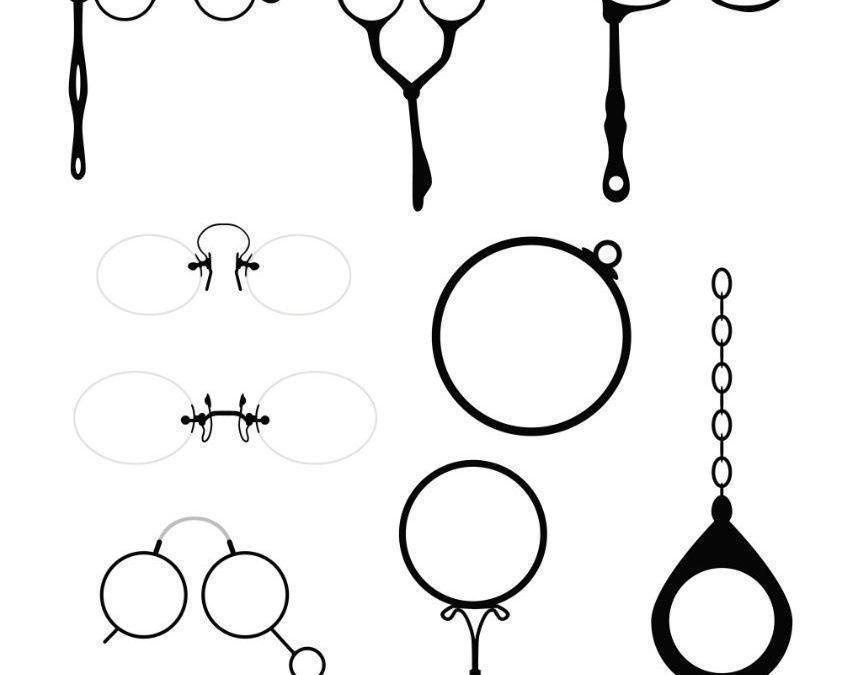The Museum of Vision houses a number of exhibits that demonstrate the many changes in eyeglasses since the first pair were documented in Italy sometime between 1268 and 1289. Used mostly by scholars and monks, the earliest glasses weren’t worn, but either held or balanced on the nose. It wasn’t until after the invention of the printing press in 1452 that literacy rates increased and more people began needing eyeglasses.
Lenses
Early glasses had convex lenses that could correct hyperopia (farsightedness), and presbyopia associated with aging. In 1604, Johannes Kepler published the first comprehensive explanation of how convex and concave lenses could correct presbyopia and myopia (near-sightedness). The first lenses made of glass had a tendency to bend light, causing a chromatic aberration that appeared as a blurry rainbow around the edges of objects. In 1730, Chester More Hall solved this problem by using two glass lenses together, one of crown glass and the other of flint glass, creating the first achromatic lens. His invention increased the demand for glasses substantially.
In 1784, Benjamin Franklin invented bifocal lenses. British astronomer George Airy created the first lenses able to correct astigmatism in 1825 Inventor John Isaac Hawkins, is credited with developing the trifocal lens in 1827. The prototype for today’s popular progressive lenses was developed by Bernard Maitenaz and patented by Variluz in 1953 and further improved with an aspheric design in 1972.
Styles
Before 1727, when British optician Edward Scarlett created the style of glasses held to the temple by the ears, there were a number of different eyeglass styles. One of the first styles to become popular were called Martin’s Margins, developed by Benjamin Martin. Members of the aristocracy favored wig spectacles with longer temple pieces. Scissor spectacles were popular with those who didn’t favor wearing eyeglasses in public, including George Washington and Napoleon Bonaparte.
Lorgnettes, developed in 1780, utilized the basic design of scissor spectacles that was improved in 1830 with the addition of a hinged bridge that allowed the glasses to be folded. The pince-nez, developed in France in 1840, became popular in the U.S. after 1850. Attached to an attractive chain, it was popular with many famous figures including President Theodore Roosevelt and writer Anton Chekov. A century later, actor Harold Lloyd was one of the first to popularize modern temple spectacles.
Advances in plastics and titanium alloys made it possible to manufacture comfortably lightweight lenses and eyeglass frames in nearly every color and style imaginable. Whatever your style preferences, we carry the best that modern science has to offer.
